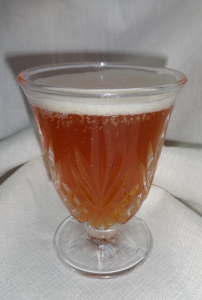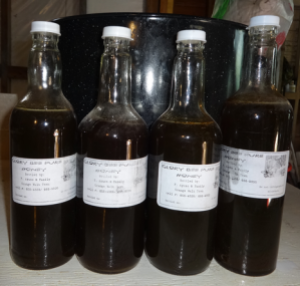 It has been a day for doing some Gnome Stuff; in this case, Ballistic Testing of Three Different Pellets. Here is a picture of them:
It has been a day for doing some Gnome Stuff; in this case, Ballistic Testing of Three Different Pellets. Here is a picture of them:

The testing materials used were three aluminium bottles filled with water, the sort used to carry specialty oils and a cocoa powder can. The bottles were set at thirty yards, like so:

And the can was set at sixty yards, hanging off of a tree.
The first thing that can be seen from the above photo is that the rightmost bottle was knocked over by the shot with the heavy, 10.5 grain domed pellet. The entry and exit holes for this pellet:


The PBA pellets make a very impressive crack, almost like a real firearm, as they break through the sound barrier. These are their photos:


The lead hollow point pellets also break through the sound barrier and are only slightly heavier than the PBA pellets. They showed similar results:


As an additional note: the can set at sixty yards and hit with the 10.5 grain domed pellets, fared like so:


There are no photos of the can for the other two pellets because I couldn’t hit the can with three shots…presumably the accuracy of the other two pellets isn’t as good as the heavy pellet, which hit the can in one shot.
These are interesting results. The heaviest pellet happens to be the cheapest but appears to go through everything shot at in this test and also seems to be the most accurate at the longest distance. While the other two pellets are more expensive (the PBA pellet almost ridiculously so), they would not go through the metal bottles and did not seem to have long distance accuracy. This is probably of no consequence for plinking (expensive plinking, mind you) but for hunting, the heavier weight and improved accuracy of the domed pellet may be an advantage in stopping something a bit bigger (and yummier!).
Laters Everyone!! 😀




































